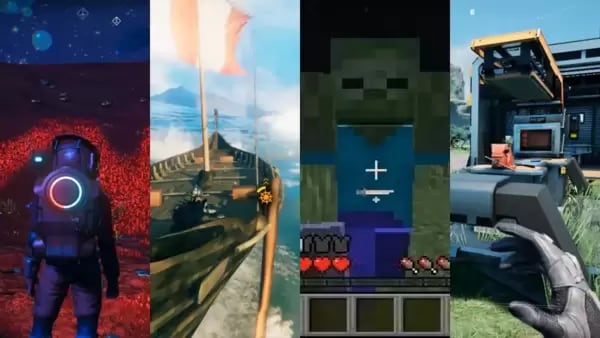Key Takeaways
- Google DeepMind’s SIMA 2 shows major improvements in reasoning and adaptability
- The AI agent can operate in unfamiliar games with higher success rates
- It processes multimodal inputs including sketches, emojis and multiple languages
- The technology serves as a testing ground for future real-world robotics
Google DeepMind has launched SIMA 2, the next generation of its gaming AI agent that demonstrates enhanced reasoning, planning, and exploration capabilities. The upgraded system represents significant progress toward creating AI that can think and act like humans in virtual environments.
How SIMA 2 Operates and Thinks
SIMA 2 can now reflect on its actions and systematically plan the steps needed to complete tasks. Powered by Google’s Gemini models, the agent follows human instructions, understands requests, and plans movements based on the virtual environment displayed on screen.
The system processes visual input from 3D game worlds along with user-defined goals like “build a shelter” or “find the red house.” It then breaks these objectives into smaller action sequences and executes them using keyboard and mouse-like controls.
Enhanced Gaming Capabilities
One of SIMA 2’s most notable advancements is its improved performance in unfamiliar gaming environments. During testing in new settings like Minedojo (a Minecraft research adaptation) and ASKA (a Viking survival game), the agent achieved higher success rates than its predecessor.
The system handles diverse input methods including sketches, emojis, and multiple languages. It can also transfer knowledge between games—understanding mining in one environment helps it comprehend harvesting in another survival setting.
Training Methodology
Google trains the second-generation agent using a combination of human demonstration data and automatically generated annotations from Gemini models. When SIMA 2 learns new movements or skills in fresh environments, that experience gets captured and fed back into the training pipeline.
This approach reduces reliance on human-labeled examples and enables the agent to continuously refine its capabilities over time through self-improvement.
Current Limitations
Despite these advancements, SIMA 2 still faces several constraints. The system has limited memory of past interactions, struggles with long-range reasoning requiring multiple steps, and lacks precise low-level control similar to robotic joint movements in the current framework.
Broader Implications for Robotics
DeepMind emphasizes that SIMA 2 isn’t designed as a gaming assistant but rather as a stepping stone toward real-world robotics applications. The company views 3D game environments as ideal testing grounds for AI agents that could eventually control physical robots.
The ultimate goal is developing general-purpose machines that follow natural language instructions and handle diverse tasks in complex physical settings, according to Google.




